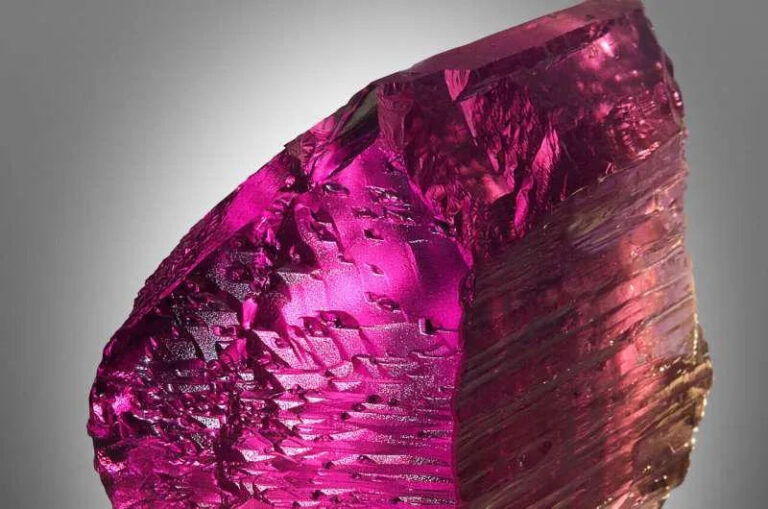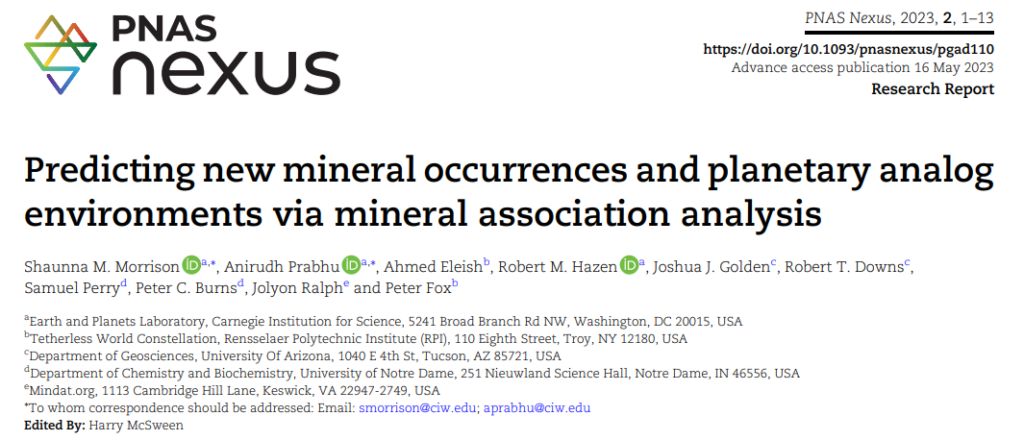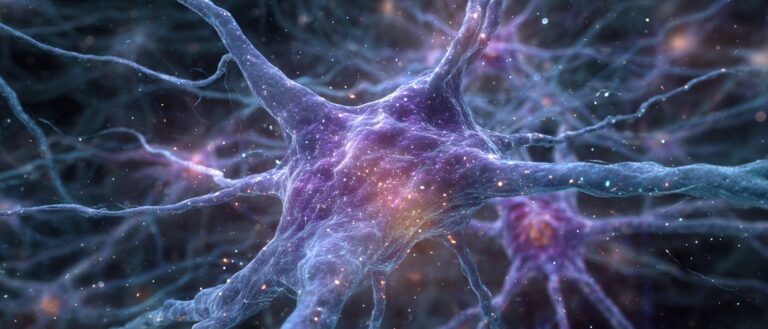AI Is Involved in the Serious "mining" industry. The Carnegie Institute for Science Has Taken a Different Approach and Used Correlation Analysis to Find New Mineral deposits.

Contents at a glance:Minerals provide important raw materials for technological societies and are also the only evidence for many geological events and ancient environments. For centuries, finding mineral resources and exploring the basic principles of their origin and distribution have been the main focus of geology. Recently, PNAS Nexus, a subsidiary of the Proceedings of the National Academy of Sciences of the United States, published a research result that used machine learning models to predict the location and type of new mineral deposits through mineral association analysis.
Keywords:Machine Learning Association Analysis Mineral Exploration
This article was first published on HyperAI WeChat public platform~
Minerals appeared billions of years ago and played a vital role in the process of biological evolution. Although there are many exploration technologies in the current geological industry, mineral resources are hidden and uncertain.The mineral exploration process is very tortuous.At the same time, it faces many challenges such as high risks, long investment cycles and low success rate in mineral exploration.
In past studies, scientists have found that more than 5,000 minerals on Earth are not randomly distributed.Many exist in symbiotic relationships (paragenesis).The so-called symbiotic relationship is a mineral combination formed under specific physical and chemical laws. For example, the formation of minerals is closely related to the chemical composition and environmental conditions of the host rock.
Recently, Morrison Shaunna M from the Carnegie Institution for Science in Washington, together with Prabhu Anirudh from the University of Arizona and others, used machine learning to discover the laws of mineral combination and predict the location of minerals. The research results have been published in the journal PNAS Nexus.The title is "Predicting new mineral occurrences and planetary analog environments via mineral association analysis".

The research results have been published inPNAS Nexus"superior
Paper address:
https://academic.oup.com/pnasnexus/article/2/5/pgad110/7163824?login=true
Experiment Overview
The researchers developed a machine learning model that uses data from the Mineral Evolution Database to predict mineral locations based on association rules, and tested the model in the Tecopa Basin (a well-known Mars simulation environment). The experimental results show that machine learning can effectively predict mineral locations, mineral types, and mineral quantities.
Association analysis is a machine learning method.Used to discover association rules and patterns in data sets.It reveals the correlation and dependency between different item sets by analyzing the association between item sets in the data.
The authors propose that if the right data is available, mineral assemblage analysis can predict not only the location of new minerals and the types of minerals they contain, but also the amount of minerals present at a given location. And the model is applicable not only to Earth but to any rocky planetary body.
Dataset
The dataset for this study contains 5,478 minerals, 295,583 mineral locations, and the associated age of 5,472 mineral locations from the large Mineral Evolution Database, which contains 810,907 mineral-location combinations. Due to the large size of the data, the researchers divided it into different subsets and selected three of them:
* Geographic Subsets:The researchers selected the United States, which has high mineral diversity, wide geographic coverage and well-documented geological environments. The subset contains 2,622 mineral species, 93,419 mineral occurrences, and 8,139,004 association rules.
* Geochemistry subset:The researchers selected uranium deposits to examine uranium-bearing mineral phases by analyzing one or more mineral species with U as the base element. The subset contains 5,439 mineral species, 11,729 mineral occurrences, and 60,589,982 association rules.
* Time subset:The researchers selected three time slices: Archean (> 2.5 Ga), Proterozoic (2.5 – 0.54 Ga) and Cenozoic (< 0.54 Ga).
Model development
Based on the above data set, researchers began to develop models and verify their effects.The whole process is divided into 3 steps:
1. Mineral association rule generation
The researchers used the Apriori algorithm, which is commonly used in association analysis. The algorithm uses a bottom-up approach to generate association rules by testing and comparing sets of frequently co-occurring items (such as mineral assemblages). These rules can be used for mineral association analysis.
2. Possibility measurement of mineral association rules
The researchers set up possibility indicators to screen out association rules that meet the requirements. Possibility indicators refer to indicators that quantify and evaluate the association relationship between minerals. Common possibility indicators include support, confidence, and lift.
Support refers to the proportion of all samples containing two or more minerals at the same time.The higher the support, the stronger the association between these minerals.

Figure 2: Support calculation formula
Confidence refers to the probability that when one mineral occurs, another mineral will also occur.A high confidence level indicates a strong association between the two minerals.

Figure 3: Confidence calculation formula
The degree of elevation is the ratio of the probability of two minerals occurring together to the probability of them occurring independently.A lift greater than 1 indicates a positive association between the two minerals, less than 1 indicates a negative association, and 1 indicates no association.

Figure 4: Lift calculation formula
3. Mineral Association Rules to Predict Minerals
In this study, the researchers mined and analyzed existing mineral data and generated association rules for the three data subsets mentioned above (geography, geochemistry and time). They compared the occurrence of minerals at the predicted location with the association rules and predicted the mineral types, mineral combinations and mineralization environment at any location.
Experimental Results
The experiment was conducted in the Tecopa Basin in California, USA, because it contains volcanic ash and travertine deposits, and there are basalt lava flows nearby that can simulate the Martian environment.The researchers predicted the types of minerals that would appear at the site.As shown in the following table:

Table 1: Mineral types predicted to occur in the Tecopa Basin
The table shows the relevant confidence and lift metrics for the association rules on which the predictions are based.
The researchers also predicted where uranium and several other key minerals might appear and marked their predictions on the map.The results of the uranium mine prediction location are shown in the figure below.Among them, some predictions have been confirmed since October 2020, which proves the predictive ability of mineral correlation analysis.

Figure 5: Predicted geographical location of uranium deposits
The predicted locations of several other key minerals are shown in the figure below.

Figure 6: Predicted geographical locations of several other key minerals
As of October 2021,Confirmed locations are marked with the Mindat logo. Mindat is a global mineral database website. When a mineral is discovered in a certain place, it will be published on the website.
In addition, in order to further understand the changes in minerals in the history of the Earth, the researchers also studied the mineral association rules in selected time periods, including the Archean (>2.5 Ga), Proterozoic (2.5-0.54 Ga) and Cenozoic (<0.54 Ga). The degree of mineral combination improvement in the three time periods is shown in the figure below.

Figure 7: Archean (a), Proterozoic (b), and Cenozoic (c) mineral assemblage elevation
The degree of elevation represents the strength of the association between mineral assemblages. It can be seen that there are obvious differences in the distribution of mineral assemblages in the Archean, Proterozoic and Cenozoic. This law can be used in future research.Further explore the impact of various factors such as environment and climate on mineral combinations.
In summary, mineral association analysis can be applied to predict new mineral types and target mineral locations.
Association analysis: one of the most active methods in information mining
Association analysis, also known as association mining, is one of the most active research methods in the field of data information mining. It was first proposed in 1993. The author of this paper proposed in the discussion section thatThe application of association analysis should not be limited to mineral assemblages.It can also be further applied to analyze other properties such as symbiotic fossils, microorganisms, molecules and geological environments. This is because this method is scalable and transferable, and can be applied to many fields and play an important role.
In addition to the application of correlation analysis in mineral exploration discussed in this paper,Its progress in human, animal and plant genetics research is also worthy of attention.At present, researchers in this field have proposed a series of new methods and software based on association analysis. For example, the PLINK software, which was open to the public earlier, can be used for data management, population structure evaluation, association analysis of complex traits and case-control data, and can also process genotype and phenotype big data; QTXNetwork developed by Professor Zhu Jun's laboratory at Zhejiang University is an association analysis software package based on GPU computing that can process large-scale complex trait omics data.
As the amount of data continues to increase, computer science and technology and statistical algorithms continue to be updated, the application of association analysis in various fields will further develop.New efficient, rapid and massively labeled association analysis technology platforms will also emerge.In this context, when teams and individuals choose tools, they need to evaluate and compare them based on actual business needs.
Reference Links:
[1]https://www.doc88.com/p-9788189626622.html?
[2]https://zwxb.chinacrops.org/article/2016/0496-3490-42-7-945.html
This article was first published on HyperAI WeChat public platform~








